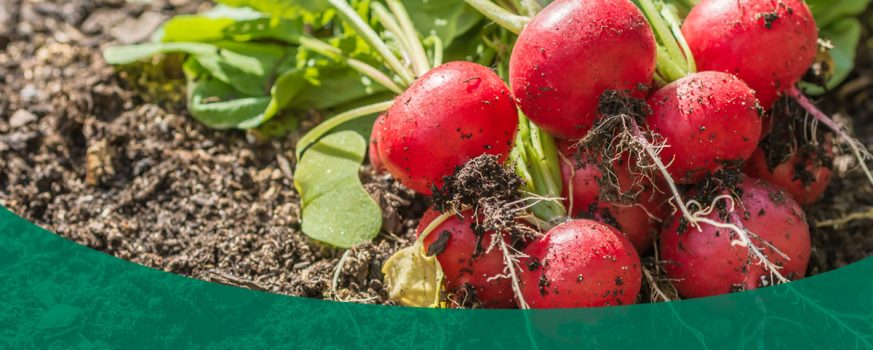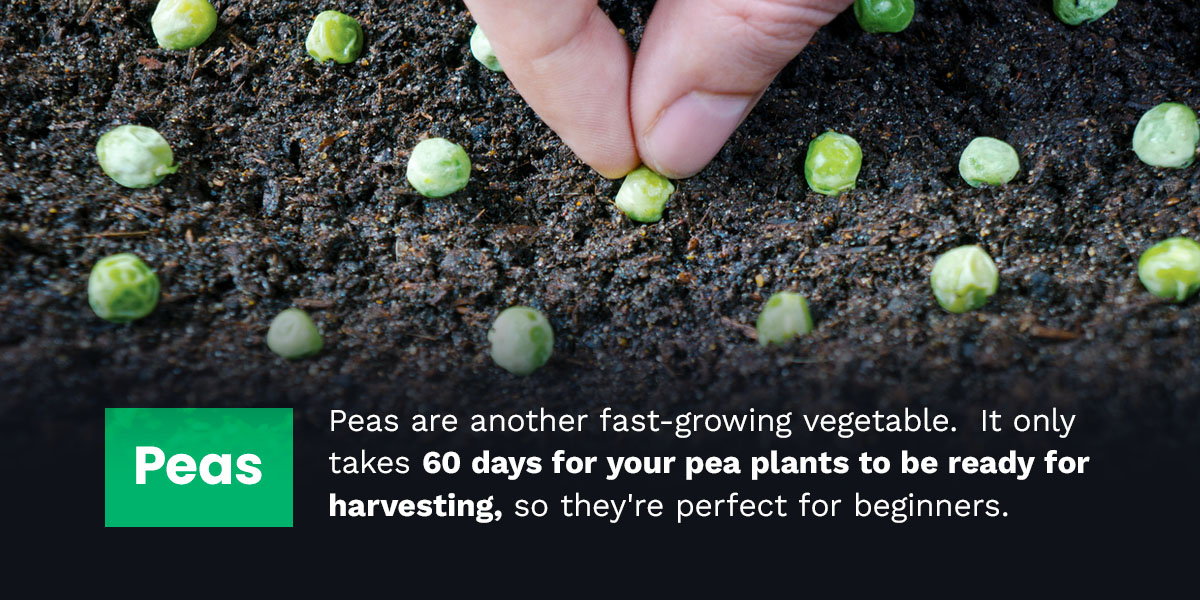
Starting a garden is a perfect way to eat healthier and improve your sustainability. Growing plants from tiny seeds into fully mature crops can be a rewarding, delicious hobby. But gardening can seem like a monumental task with so many fruit and vegetable options. Starting your garden with the right crops and materials will help you grow a harvest successfully.
Here are some of our top crops for beginners — they’re hardy and fast-growing, so you’ll see results quickly. We’ve picked vegetables with relatively short harvest times, low watering needs and few pest concerns. While all the vegetables in this article are great for beginners, try to pick the ones you enjoy eating — you’ll reduce food waste and make gardening much more fun.
Getting Started
When beginning your gardening journey, it’s essential to consider your location. Different zones have unique climates, elevations, soils and growing conditions — you’ll want to ensure the plants you grow can thrive in your environment. Use the United States Department of Agriculture map to find your growing zone and identify the plants that will thrive in your region.
Once you know your zone and have checked the crops you can grow, you’ll need to figure out each plant’s growing season and schedule. Planting and harvesting in the correct season will help you produce a thriving garden. Some plants, like radishes, are more resistant to pests. Keep the appropriate pesticides on hand to protect your vegetables from harm.
Growing a garden takes some trial and error, so don’t be afraid to fail. Explore some easy-to-grow plants and start feeding your family tasty homegrown foods.
Radishes
Radishes are some of the easiest crops to grow. They mature quickly, have few pest issues and are simple to harvest. Radishes are a hearty, delicious vegetable that works well in salads, stir-fries and sandwiches. These vegetables grow well in cooler conditions, and you can harvest them three to five weeks after planting — an extremely brief turnaround time. Radishes’ hardiness and rapid growth period make them ideal for beginner gardeners.
For successful radish planting:
- Plant your radish seeds between April 1 and May 1, or from Aug. 1 to Sept. 1.
- Make sure to loosen the soil and plant the seeds six inches deep, leaving a few inches between each seed.
- You should soak the soil with water once a week — however, if you get an inch of rain, you don’t need to water your plants.
You can harvest your radishes after three to five weeks have passed. Pull them up once they’ve reached your desired size. Avoid leaving them in the ground over five weeks, as they can become fibrous and less tasty if left for too long.
Peas
Peas are another fast-growing vegetable. They need milder conditions to grow and won’t produce pods when temperatures get above 85 degrees Fahrenheit. It only takes 60 days for your pea plants to be ready for harvesting, so they’re perfect for beginners. Peas come in tall- and short-growing varieties — if you’re a beginner and want to avoid setting up a larger trellis, choose short or bush pea varieties. Taller pea plants can grow up to five feet and need more trellis support.
You’ll need to plant your peas in cooler weather. Peas thrive in temperatures between 55 and 65 degrees Fahrenheit, so aim for planting in February through April. Once you’re ready to plant, you should do the following:
- Dig a shallow trench and place the pea seeds in a single row six inches apart.
- Install your trellis next to the seed row and cover the seeds with one inch of soil. You can add compost on top to help firm the soil.
- To water your peas, soak the soil until it’s wet one inch down once a week. If you get regular rain during the spring, you might not have to water at all.
- After 60 days, you should see peas inside the pods — sample them to check their maturity. When they’re ready, they’ll be a little larger than the initial seed and will taste sweet.
Lettuce
Growing lettuce gives you easy access to bright, fresh salad and sandwich fixings without going to the grocery store. Lettuce grows best in milder conditions, so avoid planting it in the high heat of summer or winter cold. Lettuce is ready to harvest in around six weeks, which means you won’t have to wait long to enjoy fresh greens. Lettuce grows well indoors and outdoors — start your plants inside during the winter and summer and transplant them outside or start another round in the spring and fall.
To plant your lettuce:
- Scatter some seeds in the dirt and cover them with a thin compost layer. Once the seeds grow into seedlings, you should thin out your lettuce, allowing four to six inches between each plant.
- Give them an inch of rainfall or a thorough watering once a week.
- When you start hitting the six-week mark, harvest the leaves as they reach the size you want.
Kale
Kale couldn’t be easier to grow, and it’s a superfood — full of vitamins K, C and A. With so many essential nutrients and vitamins, it’s a must for any beginner garden. You can even grow and harvest kale during frosts, harvesting and cooking the frozen leaves. Its durability and quick growth make kale approachable for any new gardener.
You’ll want to begin growing your kale indoors or plant it outside in late spring.
- Sow your kale seeds half an inch deep in the soil.
- After the plants begin growing, thin them out, leaving 18 inches between each plant.
- Once it’s been around 60 days, harvest the leaves when they reach your preferred size. You can keep the plants closer than 18 inches if you want to eat younger, smaller kale leaves.
Grow Your Garden With CropCare® Agricultural Supplies
It takes more than water and idea climate conditions for small to midsized gardens and farms to thrive — you also need fertilizers and pesticides to maximize your crop. CropCare®’s high-quality agricultural sprayers and vegetable equipment improve the convenience and quality of farming, allowing you to care for your crops year-round easily. With spray speed control and shields to protect plants, our products improve the efficiency of agricultural work for everyone.
Any purchase from CropCare® comes with free technical support and a complimentary quote. If you want to get started with CropCare®, find a dealer near you today!



